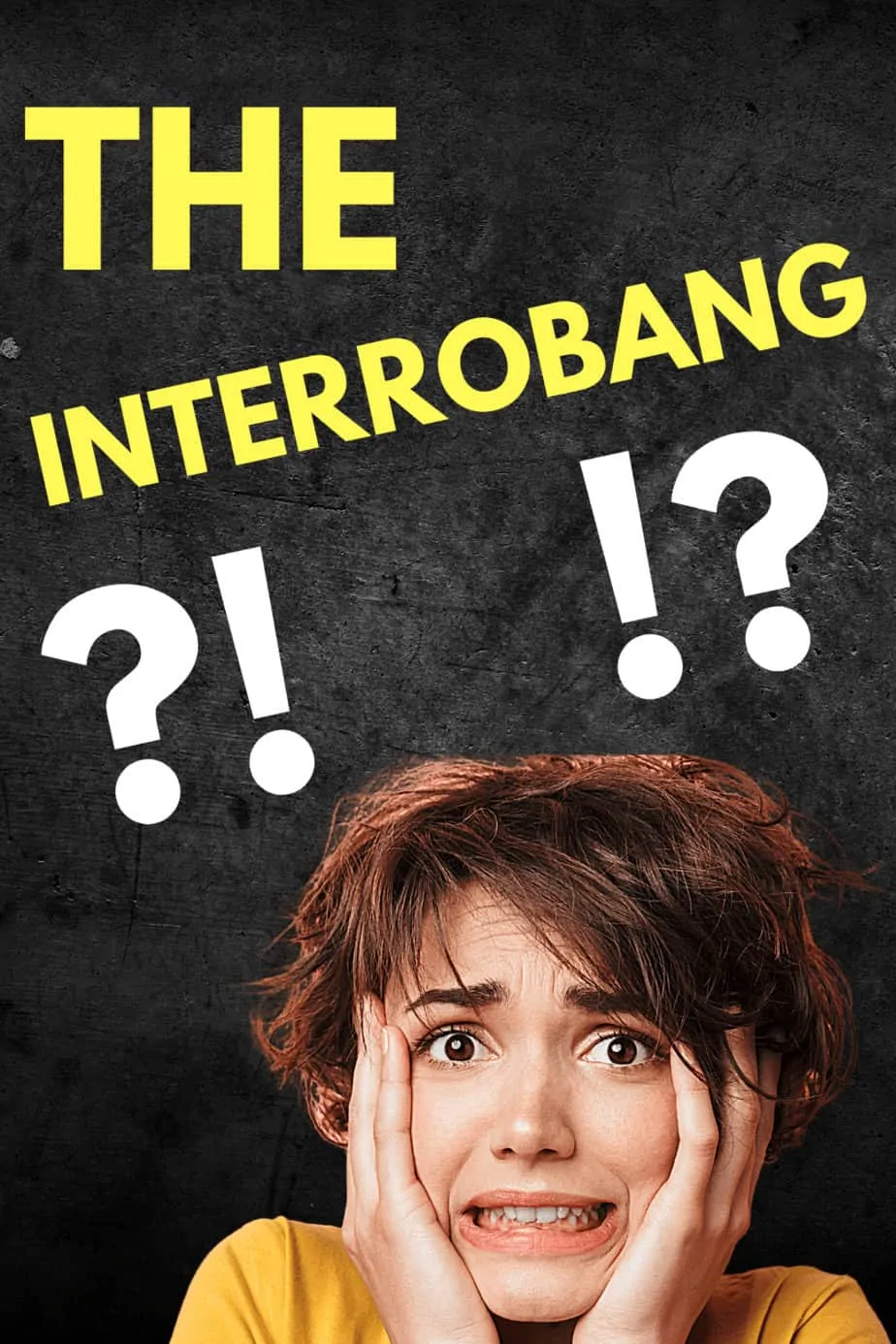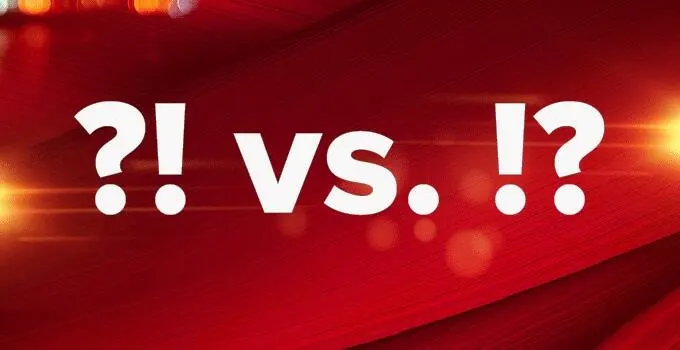Punctuation helps us break down sentences and understand where one clause ends and another begins.
Given how writers are constrained by their inability to use their voice tone and body language to convey a message, punctuation is a sort of substitute, a tool whose only function is to clarify sentences.
Here are a few instances that show the power of punctuation:
“Let’s eat, Grandpa!” vs. “Let’s eat Grandpa!”
Whereas the first sentence is an invitation to Grandpa to come eat with you, the latter sentence is an invitation to eat Grandpa himself. Quite the difference!
“A woman, without her man, is nothing.” vs “A woman: Without her, man is nothing”
This one speaks for itself.
You’ll probably find this one in resumes:
“My interests include cooking dogs and yoga vs. “My interests include cooking, dogs, and yoga.”
So, unless you actually like to cook dogs, it would be a good idea for you to remember inserting that critical comma.
And, just like language, punctuation evolves with time: Some new characters are introduced, while others are taken out of circulation. Today’s case, the interrobang, is no exception.
It is a relatively new mark, one that still hasn’t made its way into formal writing yet.
Nevertheless, we will look into this curious mark and attempt to answer a simple question: What’s the proper way of writing an interrobang?
Is it a question mark followed by an exclamation point (?!) or is it the other way around (!?)?

Should the interrobang be written as “?!” or as “!?”?
Despite its occasional use, there seems to be no consensus on how you should write it. There are four main opinions on the matter, each offering their reasons for why they believe they are right.
Some will say that it really doesn’t matter how you write it seeing as it is grammatically incorrect in the first place.
Hell, if you want to write the interrobang’s mixed form, which looks something like this “‽”, go right on ahead; it’s all the same.
Others will tell you that how you write it depends on the context and on what you are trying to say: They believe that “?!” and “!?” signify different things, and if you want to emphasize an actual question you are asking, then you should use “?!”.
But, if you are making a statement while displaying your befuddlement with the whole situation, then the “!?” would be more suitable.
Even the world of chess acknowledges the distinction between both forms of the interrobang.
Another group will support one way of writing the interrobang over another. Those who prefer “?!” argue that interrobangs are mainly used with questions, so the question mark should always come first.
Alternatively, those who prefer “!?” claim that it is more aesthetically pleasing to write it so.
The bottom line is that there is no correct answer to this question, and it really depends on who you ask. And, since each person might define an interrobang differently, their use of this mark will differ accordingly.
That said, we can delve deeper into the arguments presented by each group, and then you can decide for yourself what makes the most sense to you.
But, first, let’s start with the most basic question, should you use an interrobang in the first place?
Should you even use an interrobang?
There are two main camps here: The traditionalists argue that this punctuation should not be used, but more progressive writers will argue for its usage.
You shouldn’t use an interrobang in the first place:
Conventionalists will argue that a sentence should end with a single punctuation mark only; anything more is against the rules.
And, since the essence of an interrobang is combining two different punctuation marks, then it shouldn’t be used in writing, formal or informal. It goes against the rules.
Additionally, aside from being “incorrect,” they will argue that an interrobang serves no real function. For them, it is an over-the-top mark that substitutes simplicity for too much flash.
A much more economical way of writing a sentence would be to figure out what the sentence is trying to say and then to use the appropriate punctuation mark.
And, if you are writing a question that needs to be asked emphatically, rather than writing “?!,” you can use an exclamation mark only. The question can already be understood from the structure of the sentence, while the exclamation mark brings the emphasis.
On the other hand, if you end a statement by an exclamation mark followed by a question mark, “!?,” the question mark undercuts any seriousness the exclamation mark brought to the table, diluting the effect of the whole thing.
Let’s look at examples:
”What are you doing?”
This is a direct question that expects a direct answer.
”What are you doing!”
Even though this is phrased as a question, the exclamation mark at the end shows that it is more of a rhetorical question, one where the individual isn’t expecting an actual response.
You should actually use an interrobang:
The argument here is simple: Punctuation should evolve to keep up with the times, and the interrobang does actually have something to add to our understanding of a sentence.
It adds a certain nuance to how we interpret a sentence, one that ordinary punctuation marks can’t satisfy. And, since punctuation’s only goal is to clarify sentences for us, any mark that expands on the intended tonality or inflection should be welcomed.
Also, there is ample precedent for the usage of this mark in both its forms, “?!” and “!?”. You’ve probably come across an interrobang before: It’s used in plenty of cartoons- think Wiley Coyote.
It’s also used in plenty of informal writing, including movie scripts and comic books. Even Shakespeare used it in one of his plays.
When talking of Shakespeare, it is also worth nothing that the interesting expression “The world is your oyster” has its roots in one of Shakespear’s plays.
Other examples where the interrobang was used can be found in the Corpus of Contemporary American English, which contains more than 3500 instances of the usage of “?!” and more than 1100 instances of the usage of “!?”.
The same goes for the British National Corpus, which has more than 200 examples of “?!” in use and more than 120 examples of “!?”.
There are also numerous historical instances where this mark was used. On May 9, 1936, the San Francisco Examiner published a headline that read, “What the…?! Neves, Called Dead in Fall, Denies it.”
Also, both the State Library of New South Wales, which is in Australia, and the educational publishing company Pearson use the interrobang as their logo, with the latter, Pearson, trying to convey the “excitement and fun that comes with learning.”
Even the legal system has seen its fair share of interrobangs.
In 2012, Chief Judge Frank H. Easterbrook made use of an interrobang in the United States Seventh Circuit opinion Robert F. Booth V. Crowley.
Similarly, in 2018, Justice Michael Wigney of the Australian Federal Court put an interrobang in the first paragraph of his judgment in the case of Faruqi v Latham.
So, how do you write an interrobang?
As we look at the different arguments for how you should write an interrobang, we will inevitably come across different definitions for this punctuation mark.
So, every time we look at what one group has to say, we will also be looking at what the interrobang means for them.
This is important to bear in mind so that you don’t get confused by the different definitions and uses offered by each group. When looking at a particular suggestion from a specific group, we will be seeing things from their perspective.
Camp Nr. 1: It doesn’t matter how you write it
The simplest answer out there is that it doesn’t matter how you write this punctuation mark. It’s already grammatically incorrect, so what’s the point in fussing about how to write it “correctly”?
Over and above, there is no difference between “?!” and “!?”, making them interchangeable.
For example, if you ask a friend, “Did you eat my cake?!”, you are asking a question, but you are also displaying incredulity because you already know the answer.
And, if you say, “You ate my cake!?”, you still are posing a rhetorical question, one that is meant to show how shocked you are with someone else’s behavior.
So, technically, they are saying the same thing.
None of this is to mention that the status of a sentence as a question or as a declarative statement is defined by the sentence’s structure, which is why “!?” does not take anything away from a posed question.
For those arguing that you can write an interrobang however you like, there is a third option worth exploring: The mixed interrobang, which looks something like this: “‽”
This character combines the question mark and the exclamation mark into one symbol, ridding us of the need of figuring out which should come first.
The mixed interrobang can be used in any place where a normal interrobang would be suitable: a question asked in an excited manner, a question that displays excitement or disbelief, or a rhetorical question. Here are a few examples:
What was that‽
You’re sick‽
How did you know‽
The mixed interrobang was first introduced to the world in 1962 by Martin K. Speckter, the head of an advertising agency. He made the suggestion in an article that was published in the magazine TYPEtalks.
In fact, this is where the interrobang gets its name from. When Speckter conceptualized the punctuation mark, he chose interrobang because “interrogatio” means “rhetorical question” or “cross-examination” in Latin, and “bang” refers to the exclamation mark in printers’ slang.
Camp Nr. 2: How you write an interrobang depends on the context
By far, the most popular answer you’ll find is that how you write the interrobang depends on what you want to say. The underlying assumption here is that “?!” has a different connotation than “!?”.
“?!” implies that the statement is a serious question, one where a response is expected. For example, when you ask someone, “Did you eat my cake?!”, you actually expect an answer from the other person, and the exclamation mark at the end shows how livid you are that someone ate your cake.
Put more simply, “?!” is a question about something you find shocking.
Other examples are “Why did you do that?!”, “How did you know where to find me?!”, and “Where did you go?!”.
Even though the asker is expecting actual responses in all three questions, the exclamation mark shows their displeasure with the person’s actions in the first question, with the fact that the other person found them in the second question, and with the fact that the other person left in the third question.
On the other hand, “!?” implies that the question being asked is rhetorical in nature and no answer is expected. And, while the exclamation mark is there to show the shock or horror at the situation, the ensuing question mark serves to show that the speaker is having a hard time understanding how this could have happened in the first place.
So, “Did you eat my cake!?” shows the speaker’s disgust with the fact that the other person has eaten their cake, but it also shows that the speaker is unclear on why the other person would do this.
Other examples are “You didn’t try to find him!?”, “You let him get away with that!?”, and “You took his bag!?”.
In all three examples, the speaker already knows that answers to his questions, but they are indicating their shock with the fact that the other person didn’t try to find someone else in the first example, that they let someone get away with something in the second example, and that they took someone else’s bag in the third example.
Camp Nr. 3: The correct way to write an interrobang is “?!”
The idea here is that interrobangs are mostly used with questions; hence, it should stand to reason that the question mark ought to come first.
The group espousing this view argues that interrobangs are only used to accentuate questions and to emphasize it.
However, if you write an interrobang as “!?”, then you are questioning an emphasis, which really doesn’t make sense.
To them, the question mark in “!?” doesn’t show a lack of comprehension about how something came to be but rather displays that the speaker is unsure of their shock, hence questioning it with a question mark.
Another reason “!?” is invalid is because a writer can end a rhetorical question with a full stop instead of an interrobang. So, seeing as writers should always opt for succinctness, there is no need to end a rhetorical question with an interrobang when a period will get the job done.
Camp Nr. 4: The correct way to write an interrobang is “!?”
Finally, you have the camp that argues that the exclamation mark ought to come before the question mark. For one thing, some feel that “!?” is more aesthetically pleasing than “?!”, justifying their preference.
For another thing, interrobangs are used with questions, so the question mark should come at the end of the sentence, reinforcing the original nature of the question.
The interrobang in chess
This nuanced understanding of the interrobang isn’t something new; the chess world has been using both forms of the interrobang, with each one meaning something slightly different.
Chess already uses exclamation marks and question marks when commenting on the moves played during a game.
For instance, “!” is used to indicate a good move, and “!!” is used to indicate an excellent move. On the other hand, “?” indicates a bad move, and “??” indicates a downright blunder.
As for the interrobang, if written “?!”, it indicates that the move that was played was questionable but may have some virtues lurking in the background. Conversely, if written “!?”, it indicates that the move that was played seems good but may have some flaws about it.
What becomes of the interrobang?
A recurring theme of this article is the importance of punctuation in clarifying what a sentence is trying to say. To that end, it is entirely fine to come up with new punctuation marks so long as there is a shared consensus surrounding what this mark signifies.
A case in point is how the English printer Henry Denham suggested coming up with a mark to indicate irony or sarcasm, a mark called the percontation point and looks like a reverses question mark: “⸮”.
The problem with the interrobang is that there seems to be no consensus on whether we should use the mark in our writing, let alone how we should write it.
This confusion stems from the lack of agreement around what the mark means or what it signifies. So, for the time being, use the interrobang with caution, and be aware that using it will confuse some of your readers.


Hey fellow Linguaholics! It’s me, Marcel. I am the proud owner of linguaholic.com. Languages have always been my passion and I have studied Linguistics, Computational Linguistics and Sinology at the University of Zurich. It is my utmost pleasure to share with all of you guys what I know about languages and linguistics in general.


